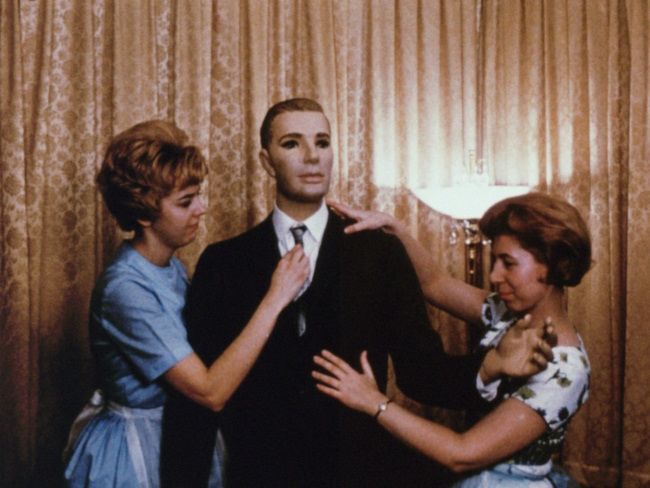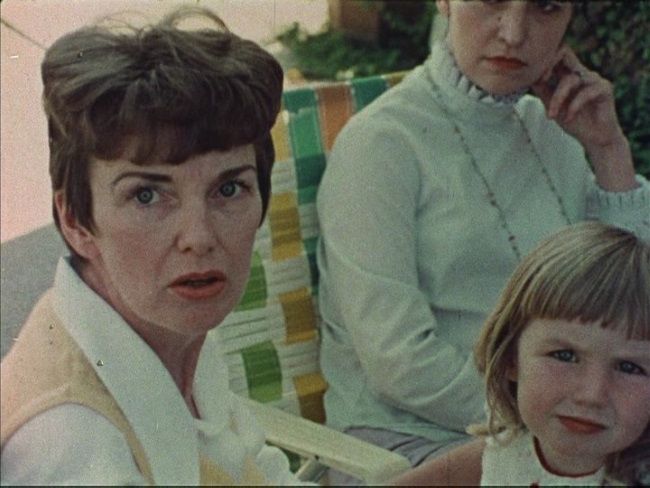My second set of short films at the Wisconsin Film Festival this year was called "Tap Dancing Teens & Screaming Sandwichmen: Gems from Chicago Film Archives". It collects 7 short films - genuine prints on 16mm & 35mm - from the holdings of the Chicago Film Archives. The CFA collects and preserves home movies as well as films by amateurs and professionals alike from the Midwest, with an emphasis on Chicago.
First up was "Variety Show at Peoria's Palace Theater".
It was exactly as the title said. Now we know what people in Peoria did for entertainment in 1934. They enjoyed some singing, tap dancing, gymnastics, and even a prepubescent Mae West impersonation. The looks of sheer disinterest on the faces of a couple of the musicians were classic. Lots of laughter in the audience as the hokeyness meter went into the red.
The Saga of the First and Last was essentially an anti-smoking PSA from 1954. I think I'd puke too if I had to smoke filterless Lucky Strikes like the kid in the film. Didn't they kill Edward R. Murrow?
From 1966 came Super Up.
Shot by a Japanese filmmaker, Kenji Kanesaka in 1966, it portrays a boy seemingly lost in a world of advertising with billboards and signs everywhere. Shot in Chicago, it didn't take long for me to develop a craving for a Chicago dog made with a Vienna beef frankfurter as it seemed like every other sign was for a hot dog.
I saw a trolley bus in one shot and it threw me off because I thought they were all gone by 1960. Partly gone, as it turns out. The last one finished its route forever in 1973.
It's a surreal collage of outdoor advertisements and shots of the kid running away after having stolen a gallon of milk. It'd be a fine opener for a screening of Zabriskie Point, in my humble opinion.
Before there was Ed Debevic’s, there was Jerry's Deli. A funny profile from 1976 of Jerry Meyers whose customers came to expect (and love) his surliness and all that yelling. Other than being on Grand Avenue, I am unable to find much out about the deli.
Biggest laugh for me was when he was taking an order and he asks the customer if they want the sandwich on rye and, as he is doing so, he makes a fist and pulls his arm back. Also, a nice bit about the first black front of house employee he had.
We witness a chocolate cake being made and carefully frosted before it gets the Monty Python treatment. This was made as a response to an incident when some guys from the Chicago area experimental film scene were less than gracious guests at the home of one JoAnn Elam.
Just a few minutes long, its delightful ending took us all by surprise.
A ditty from the Leave It to Beaver era, Mister E features a housewife who gets her revenge on her husband who spends too much time across the street playing cards at a friend's house. She wants to go out and have fun too so, with the help of a mannequin and her pal, she fools hubbo into thinking there's another man with her.
The poor overdubs and the overall handmade aesthetic make for a wonderful short.
The program wrapped up with Eight Flags from 99 Cents from 1970. Working class (i.e. - Nixon's "Silent Majority") residents from Chicago give their take on the Vietnam War. Even in the pre-Watergate era, there's plenty of distrust of government and cynical takes on the profitability of war. (It's like Oliver Stone wrote the dialogue.) Many people would rather see their money help the poor and make schools better than go towards bombs. Plus, there's a lot of empathy towards the Vietnamese people.
When Spiro Agnew came onscreen, I had one of those "He's history's greatest monster" moments.
A lot of laughs in this program. It was fun for me to see my hometown back in the days of yore as well. That scene in Mister E where the husband is playing cards gave me a flashback to watching family movies featuring my grandfather and great uncles playing pinochle. And Eight Flags from 99 Cents was a poignant reminder that people are not always what they seem, don't always fit into our neat little boxes.







No comments:
Post a Comment